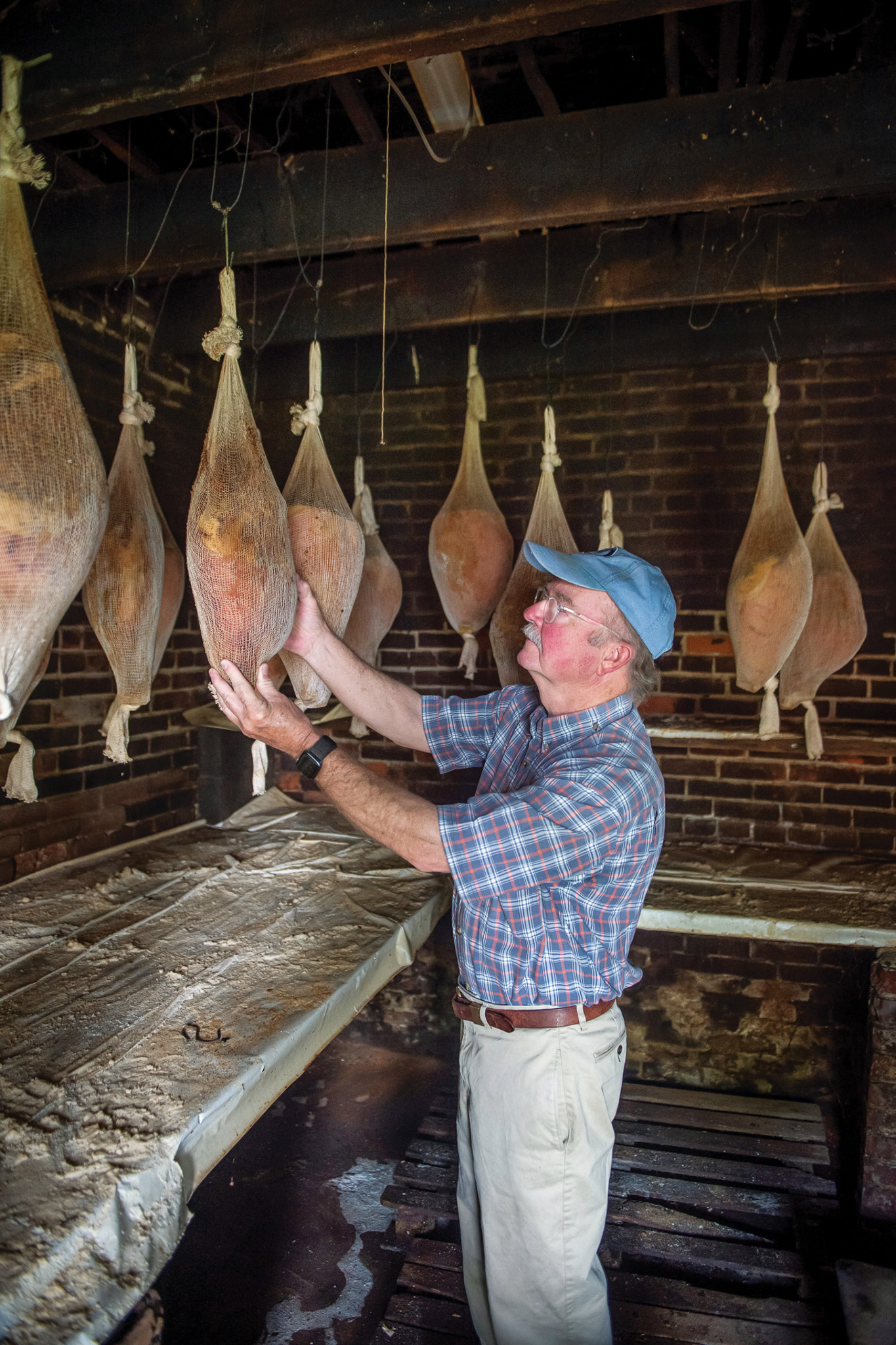Ham it up
Country ham lives on through grassroots resurgence
IF THERE’S A PRODUCT MORE AUTHENTICALLY KENTUCKY THAN BOURBON, IT’S COUNTRY HAM. Curing-savvy European immigrants came to America with hams aboard ship, and they continued that preservation tradition long after moving into what would become the Bluegrass State.
According to the National Country Ham Association, commercial curers in multiple states produce an estimated 2 million hams a year. But like many across Kentucky, brothers Houston and Scott Keach will tell you that have cured their own for decades. At their historic family smokehouse in Henderson, dozens of friends gather every January to “put up hams” for the winter. After hand rubbing the raw ham with a mixture of salt, brown sugar, nitrate (for preservation) and red pepper, the group moves about 50 of them inside the family’s brick smokehouse, which was built in 1852. Over the next few months, the hams slowly exchange exterior salt for internal water and become permanently shelf stable.
The ambient curing process—meaning without mechanical refrigeration or heating—has been practiced for about 1,000 years. But as the Earth has warmed over the past half-century, it’s become riskier to cure this way.
“With our weather (warming) as it is now, that can be a tricky process,” says Houston Keach, a Kenergy Corp. consumer-member. If the meat doesn’t stay cold enough and long enough to allow nature to cure it, it will spoil. “We’ve had to bring a lot of ice into the smokehouse some years to control that,” he says. To cure safely, hams must maintain an average internal temperature of 40 degrees or less for about 12 weeks.
Contrary to popular opinion, smoking hams won’t preserve them; it provides only color and flavor. Scott Keach says the family cold smokes its hams between March and April with a blend of pecan, oak, hickory, “apple if we can get it,” and some green wood.
“We’ll smoke them about 12 times to get the proper color we like,” says Scott, also a Kenergy Corp. consumer-member. “It takes time and attention to do these.”


PRESERVING HERITAGE
Five years ago, when the historic Penn Hams operation in Campbellsville was near closing, Blake Penn bought the operation from his grandfather and became its third-generation curer. The once-struggling business now cures a truly respectable 22,000 hams annually. Penn says some of its sales are driven by middle-aged customers’ surging fondness for the foods their parents and grandparents ate.
“They appreciate the heritage behind it,” says Penn, a Taylor County RECC consumer-member. “People say country ham is (declining) because it’s a generational food. But the way I see it, as people get older, they become the new customers buying it.”
Twenty years ago, when Kentucky’s commercial ham producers fretted that the state’s curing heritage was disappearing, they launched a collaboration with the University of Kentucky and Kentucky 4-H to connect kids to this ancient food craft. Beth Drennan, co-owner of Kuttawa-based Broadbent’s Country Hams, says Broadbent’s instructs about 40 parent-child pairs each year in curing classes.
“This has helped keep the tradition (of family curing) going, and it offers a project to kids who don’t live on a farm,” says Drennan, adding that it also teaches children about where their food comes from within the food chain.
“They come to our plant four times to do each stage of the curing process” she says. “It’s truly hands on, and they get to enjoy the result of their work by eating it.”

